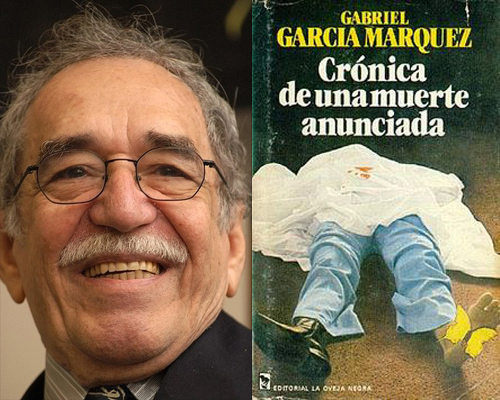The Secret Story of a Terrible Love: A Love Story Masquerading as a Crime Novel
By Tom Porter
Associate Professor of Romance Languages and Literatures Nadia Celis chose Valentine’s Day to deliver a talk to her faculty colleagues about a love story from her native Colombia—a love story that’s more traditionally associated with a classic work of Latin American crime literature.
The book in question is Chronicle of a Death Foretold, a novella written by Gabriel García Márquez in 1981, the year before he won the Nobel Prize for literature. It’s a fictionalized account of a murder that really happened in Colombia in 1951. A young bride was rejected and returned to her mother in disgrace by the groom, after she admitted to not being a virgin and having an affair with a local man. Scandal ensues, and the bride’s two brothers find and murder the young man who had allegedly “deflowered” their sister to avenge family honor.
In the book, the narrator explores the patriarchal culture of Colombian society and the prevalent machismo that underscored the circumstances surrounding the murder. He looks at how the crime was allowed to happen, the complicity of many of the villagers, and the effect it had on the bride, Angela Vicario (real name Margarita Chica Salas), who was forced to leave the town she grew up in.
As the plot developed, Vicario came to realize, several years later, that she was actually in love with the groom who rejected her, and she began writing to him. More than twenty years after they married, they were reunited.
“Garcia Márquez set out to write a crime story, but a document I recently read suggests that he came to view it as a love story—’the secret story of a terrible love,’ to use the author’s words,” said Celis, who is also director of Bowdoin’s Latin American Studies Program.
The document in question is the book’s unpublished epilogue, unearthed by Celis at the University of Texas at Austin’s Harry Ransom Center for humanities research, where the Gabriel García Márquez archive resides. “In this epilogue, Garcia Márquez writes more about the eventual reunion of bride and groom, and suggests it happened in real life, against the common assumption that the ‘love story,’ was a fictional part of the novel. He also suggests this ‘secret story of a terrible love’ is as central to the novel as the story of the crime.”

Another aspect of the novel that does not fit the real story, said Celis, is the assertion that Vicario made up her premarital relationship with the murder victim—a fantasy that cost him his life. In real life, she added, Chica Salas had been in a relationship with a young medical student, who was subsequently killed by her brothers.
All of which leads Celis to feel that Margarita Chica Salas, who died in the early 1990s, has received something of a raw deal, thanks to García Márquez’s book. She was portrayed, albeit under a pseudonym, as a contentious figure—someone whose lies led to the murder of an innocent man—in a novel read by millions of people. Meanwhile, many “terrible” implications of her love story have been widely regarded as fictional, thanks to García Márquez‘s omission of many facts about her life.
To try and redress the balance a little in Chica Salas’s favor, Celis, with the help of theater professor Abigail Killeen, will start work on a play about her this summer. “The play will be about the struggles of Margarita Chica Salas: how the original tragedy affected her, and how the publication of García Márquez‘s book impacted her.”
Celis also plans to do more research into the story of the reunion between Chica Salas and her estranged husband, Miguel Reyes Palencia, about which little is known, other than it did not end well. “It may be Valentine’s Day, but I’m afraid there was no romantic ending to this tale, no ‘happily ever after.'”